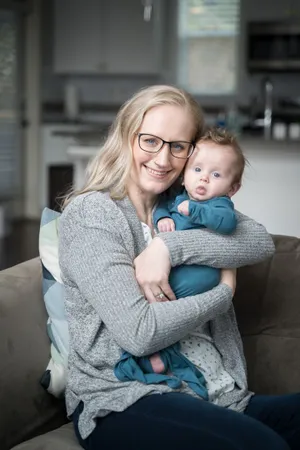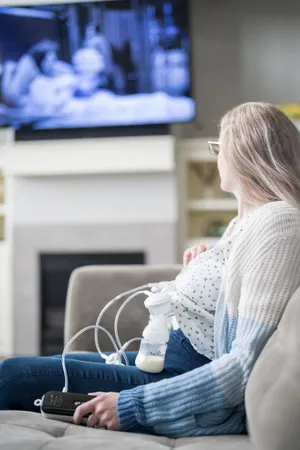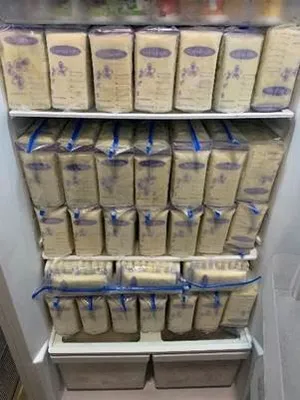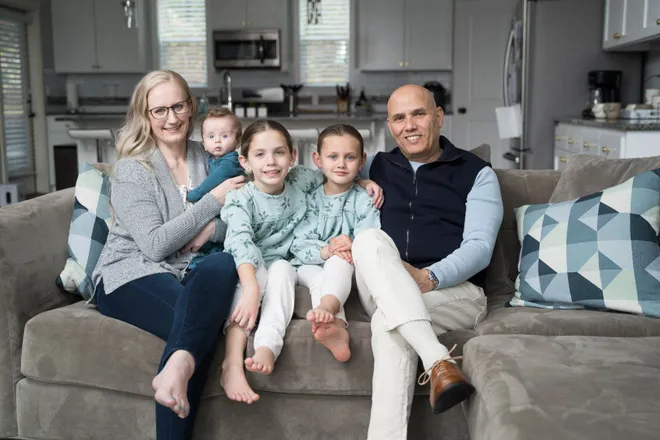'A full-time job': Oregon mom's record-setting breastmilk production helps kids worldwide
It took 958 days to pump.
And thousands of newborns are alive thanks to her selfless work.
Elisabeth Anderson-Sierra, a 35-year-old mother of three from the West Coast, is a Guinness World Record breaker for gifting more than 350,000 ounces of her own breastmilk to premature babies around the world.
The Aloha, Oregon, resident set the record for the largest donation of breastmilk by an individual by donating nearly 1,600 liters to a milk bank between February 2015 and June 2018.
Per Guinness, that’s the equivalent to 800 2-liter bottles of Coke.
Eight. Hundred. Bottles.
"I've donated more since that record too - at least 10,000 ounces more," she told USA TODAY Thursday.

A blessing and a curse
Anderson-Sierra, has hyperlactation syndrome, a diagnosis she called both a blessing and a curse.
According to the National Institutes of Health (NIH) the syndrome is a condition where breast milk overflow occurs because of increased milk production.
“My body creates a significant amount of the hormone called prolactin which drives milk production,” Anderson-Sierra said.
She began producing milk nine years ago, before the birth of her first daughter.
On average, Anderson-Sierra pumps a nearly two gallons of milk a day, spending four to five hours pumping.
In all she said she spent 958 days over the last nine years pumping.
"It's equivalent to a full-time job," said Anderson-Sierra, who retired from the U.S. Coast Guard in 2012 where she specialized in law enforcement and search and rescue.

'Failure to thrive' or not?
In addition to her first-born daughter, now age 8, Anderson-Sierra and her husband David are parents to another daughter and an 8-month-old son she is currently breastfeeding.
The mother has donated to local families and children across the globe - many of the infant recipients who have been labeled as “failure to thrive.”
According to Nationwide Children's Hospital, the term is used for newborns and infants who have failed to develop normally who are not gaining weight or height properly.

Pros and cons
Anderson-Sierra said she was not overly prepared for her diagnosis.
"It's definitely exhausting and it can be painful," she said.
But a plus, she said, is producing breast milk burns a lot of calories.
"It's like working out all day every day," she said.
Jill Martin may undergo chemo:'Today' show's Jill Martin says she likely is cancer-free, but may undergo chemo

An expert looking to help other mothers
As a Certified Lactation Counselor and BabyBuddha’s Director of Lactation Services, Anderson-Sierra coaches moms daily on tips to make pumping easier.
She uses social media as a platform to share her experience to other mothers.
"It's so rare," she said of her diagnosis. "Not everyone has this but what is relatable is I'm a breastfeeding mom and have been through every struggle imaginable over the last few years. I've taken that and worked on my platform as a way to share to other moms - so mothers don't have to experience things I experienced. To support them in the workplace, at home or on the go."
Her instagram page has tips on the following:
- Pumping equipment: How to find find the best equipment and hacks to optimize pumps on the market;
- Milk sharing: What to know and how her donations have saved thousands of babies;
- Breastfeeding in the workplace: How to normalize breastfeeding and pumping and how to do so discreetly.
Who is the youngest Olympian?Athletes that are younger than you may think.
'I may be ready to stop'
Eventually, Anderson-Sierra would like to stop pumping, she said.
"My current journey is making sure the needs of my son are met, and when that concludes I will evaluate how things are going and let my team of endocrinologists know (I may be ready to stop)."
She said there are several ways to reduce the production of prolactin, medical interventions she would need to look into to make that happen. Management, she said, includes decreasing the rate of milk synthesis, improving milk removal out of the breast, and antibiotic therapy.
Another option, she said, ia a double mastectomy to remove the tissue that produces breast milk.
'Little leg rolls'
Over the years, Anderson-Sierra said she has met dozens of her recipients, some whose parents send her photos of their growing child.
"When I see their baby fat or little leg rolls, it's so cute! I think, 'I helped make that! I helped do that!' It's heartwarming," she said. "To have any kind of relationship whether it's just a donor relationship or more of a friendship on a personal level, it's gratifying. Fulfilling to see I'm making a difference in their life."
Natalie Neysa Alund covers breaking and trending news for USA TODAY. Reach her at nalund@usatoday.com and follow her on Twitter @nataliealund.
Disclaimer: The copyright of this article belongs to the original author. Reposting this article is solely for the purpose of information dissemination and does not constitute any investment advice. If there is any infringement, please contact us immediately. We will make corrections or deletions as necessary. Thank you.







